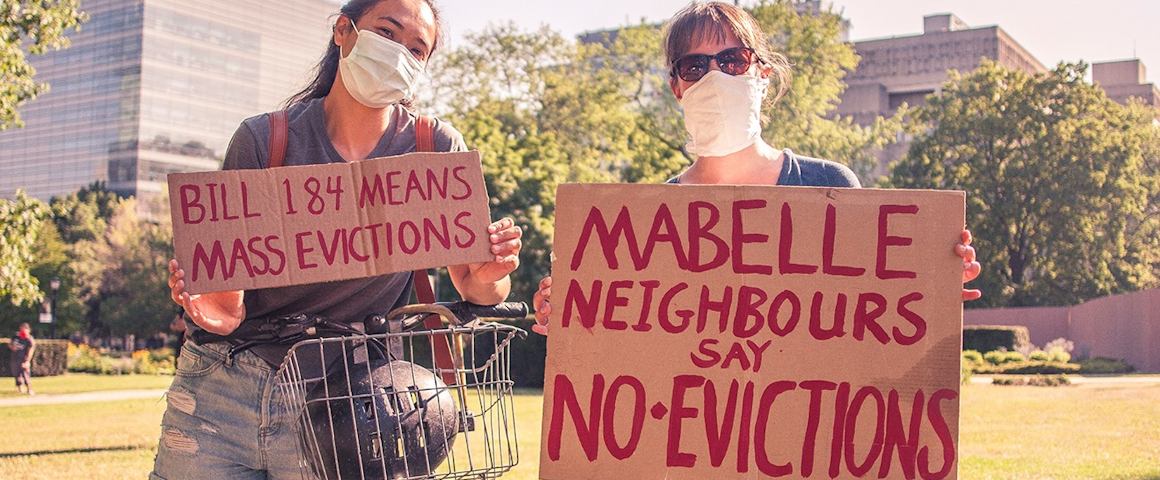By Alykhan Pabani
I care deeply about my neighbours and try in earnest to support the struggles of those less privileged than me. When the pandemic hit, the nature of these struggles became even more acute and as a result, an ad-hoc group of unpaid community members formed the Encampment Support Network in Toronto.
We have spent the last 4 months delivering basic humanitarian aid to 12 encampments to fill a void left by the city. We are not doing this work to advance ourselves or our careers – we do not want to have to exist at all, and in fact, take this question so seriously that we vote periodically on whether to disband. While any sort of recognition is not why we operate, we understand why, to date, the words “Encampment Support Network” have not escaped the lips of any Toronto city councillor or official – an acknowledgment of our existence would constitute a tacit admission of the city’s neglect.
In early October, Toronto’s Economic and Community Development Committee released its Winter Service Plan. According to the committee, the plan will provide 560 new shelter spaces for homeless people as part of “measures needed over the next 12 months to protect homeless clients and to continue to provide shelter services safely while COVID-19 is a concern.”
In the plan, the term “harm reduction” appears 12 times. I am heartened to see the need to reduce harm front-and-centre in the document and would like to offer feedback on ways this can be accomplished more effectively.
First, the city must cease encampment evictions immediately. The plan specifies that “before an encampment is cleared by a City Division responsible for enforcement, outreach workers attend the site to offer options of interim or permanent housing, motels or hotels, shelter or respite spaces to individuals to access shelter and support. If an encampment is vacated by individuals choosing to access shelter or housing or to relocate, the site is cleaned by City staff.” This is not what we have been seeing and documenting on the ground. I have had to console elderly residents as they beg in tears, to no avail, to collect their meager belongings — including their phone, ID and winter clothing — before their homes are callously tossed into a dump truck. This has to stop.
In many cases, encampment residents have not actually vacated their homes or refused alternative offers but have merely left their tent momentarily to conduct daily affairs. However, even if they had refused alternatives, they should be allowed the dignity of choosing to stay where they are.
And there are many good reasons why encampment residents might choose to do so. There are justifiable concerns around scientifically demonstrable COVID risks in congregate settings. There are the strict curfews which, if broken, come with the penalty of eviction back onto the streets and cruel disposal of one’s belongings.
And there is the reality that some houseless people suffer from addiction challenges, so they either face breaking shelter rules or using in isolation (and increasing the risk of overdose) or both. So, while the plan states that the city has “acted quickly to provide enhanced mental health case management and harm reduction services in new shelter locations where they are urgently needed as an interim measure,” many shelters immediately evict residents who are caught using on the premises. This forces people to use elsewhere, attracting the ire of ‘Not In My Back Yard’ (NIMBY) groups and leaving them susceptible to police violence and criminalization.
The plan also says that “Streets to Homes outreach teams provide water to individuals in encampments as well as health and harm reduction supplies.” However, the Toronto Police Service sits on the Encampment Operations Working Group and the Steering Committee for the city’s response to encampments — the same teams which include the city divisions tasked with distributing harm reduction supplies to drug users. This is a contradictory alliance, and grotesque breach of privacy, that amounts to entrapment – the Encampment Support Network has documented violent drug raids on encampments in the dead of night by the police.
The city boasts that it “has moved more than 850 people from encampments into safe indoor spaces” and warns about a “misperception that living outdoors is a safer alternative to staying in a congregate setting.” However, the figure of 850 conveniently includes the significant number of people who have, for myriad reasons including the ones above, voluntarily left the “safe” indoor spaces provided by the city to return to living outdoors.
The Winter Service Plan is based on city estimates that there are between 350-400 people living outdoors. Our numbers show that this is a gross underestimation, presumably intended to conceal the fact that the plan falls way short of ensuring no one will freeze to death in the coming months.
Following several deputations in September that exposed the lack of urgency in the city’s housing strategy, one councillor intimated their desire to see us come together as a united front to make demands of the provincial and federal governments. In order to do this, however, we must first all be on the same page when it comes to the urgency of this crisis.
[hr gap=”10″]
Support socialist media!
If you found this article useful, please consider donating to People’s Voice.
We are 100% reader-supported, with no corporate or government funding.




